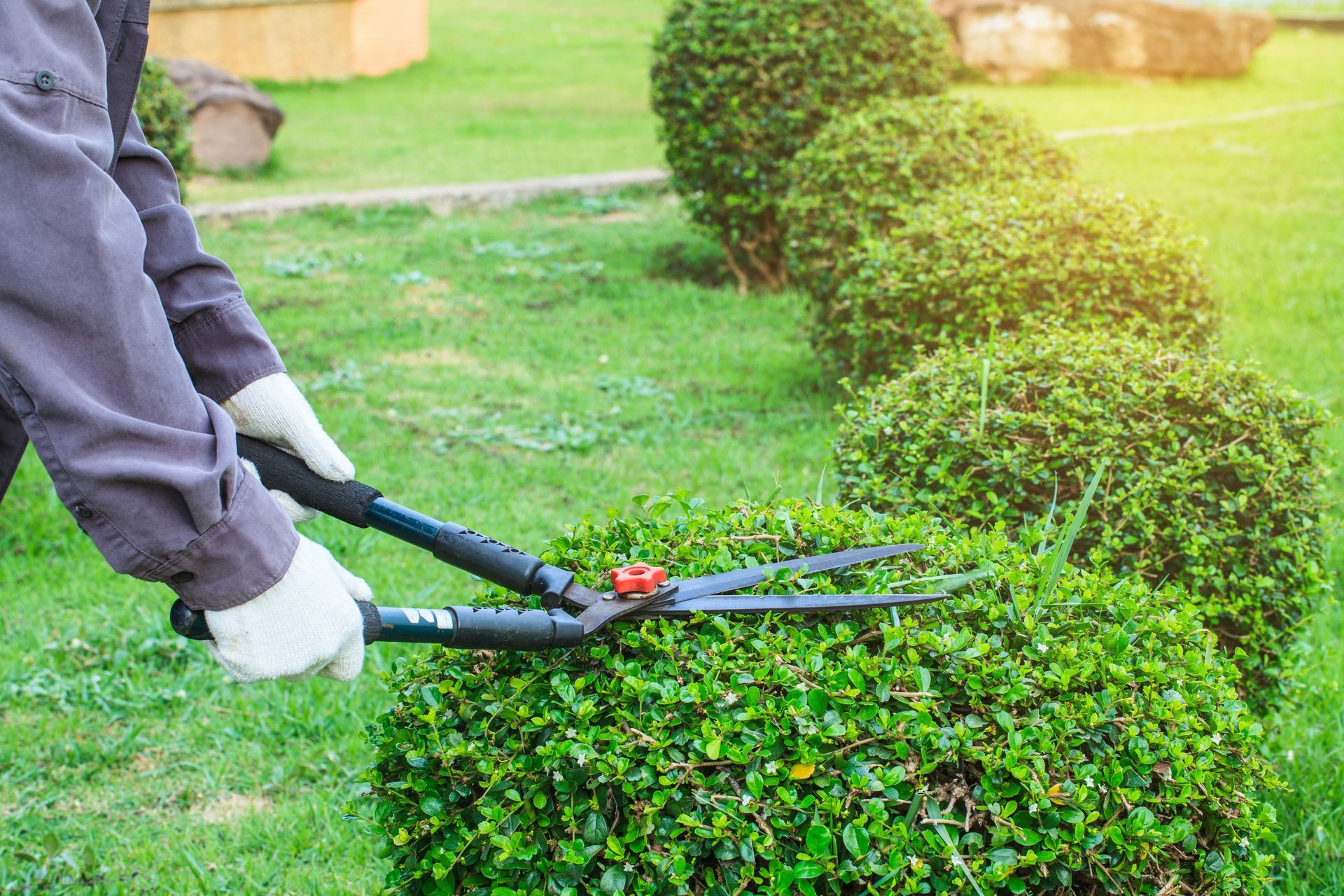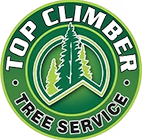September 4, 2025
In this article, we explore the essential signs that indicate the need for professional tree care services. Trees are a vital part of our environment and landscape, offering numerous benefits when properly maintained. Recognizing the signs that require expert attention is crucial for the health and longevity of your trees. Regular upkeep not only enhances a tree's appearance but also its strength, preventing potential dangers. Homeowners are increasingly investing in tree health, reflected by the fact that according to Verified Market Research, 55% of tree care services revenue comes from residential clients.
Sign 1: Visible Disease Symptoms
Identification of Common Tree Diseases
Tree diseases manifest in various forms, ranging from wilting leaves to unusual spots on branches. Common diseases include oak wilt, Dutch elm disease, and fire blight. These ailments can be identified by observing changes in foliage color, unexpected leaf drop, or growth anomalies. Early identification is vital to mitigating long-term damage and preventing the spread of pathogens. Taking note of disease symptoms puts property owners in a better position to call upon professional tree care services.
Impact of Disease on Tree Health
Diseases compromise a tree's health by hindering its ability to absorb necessary nutrients and water. Over time, infected trees diminish in vigor, potentially leading to structural instability. Diseased trees can also become breeding grounds for other pests, exacerbating existing issues. The overall aesthetics of landscapes are affected when trees lose vitality due to disease. Intervention by professionals can often reverse or stabilize these conditions, preventing further degeneration.
When to Consult a Specialist
Knowing when to seek professional advice is essential for effective disease management. Homeowners should consider consulting specialists when symptoms persist despite initial interventions. Expert diagnosis provides insight into the severity of the condition and the appropriate treatment measures. Professionals possess the tools and knowledge to execute advanced care techniques that laypersons might overlook. Decisive action at the right time can save trees from irreversible damage.
Sign 2: Extensive Tree Damage
Understanding Different Types of Damage
Tree damage can stem from physical injuries, disease, or environmental factors. Common types of damage include bark wounds, root injuries, and broken branches. Such physical manifestations can lead to secondary issues like infection or decay. Recognizing the cause of damage is vital for implementing correct remedial measures. Professional tree services play a vital role in assessing and addressing these issues to prevent further deterioration.
Assessing Structural Integrity
The structural integrity of trees is critical for safety and longevity. Damage to the trunk or large limbs can drastically reduce a tree's ability to withstand external pressures like wind and rain. Regular assessment by experts helps identify structural weaknesses early. Timely care can reinforce a tree's physical stability, reducing the risk of breakage or fall. The expertise of professionals ensures that proper techniques are employed in bolstering the tree structure.
Signs of Pest Infestation
Pests such as beetles, aphids, and borers can severely damage trees, leaving them vulnerable to diseases. Infestations often manifest through specific signs: holes in the bark, the presence of frass, or unusual leaf patterns. Unchecked infestations can escalate, leading to substantial tree damage and even death. Professional intervention is pivotal in identifying the root cause and applying suitable pest control measures. Investing in tree care services mitigates long-term risks associated with pest infestations.
Sign 3: Abnormal Growth Patterns
Excessive Leaning of Trees
Evidence of abnormal growth, such as a tree leaning precariously, could signal underlying issues. While some trees naturally lean, an excessive angle often indicates root problems or structural decay. Such conditions can be hazardous, posing risks to nearby structures and individuals. Professional evaluation is essential to understand the severity and potential remedies for these growth issues. Intervention can stabilize or safely remove threatening trees, prioritizing safety and aesthetics.
Crowded or Unusual Branch Formation
Crowded branches can limit air circulation and sunlight penetration, hindering healthy growth. Unusual branch formations might indicate internal stresses or growth compensation responses. Pruning and strategic adjustments by tree care specialists can optimize a tree's growth pattern. Proper branch management reduces disease susceptibility and improves overall vigor. Expert advice in this area ensures long-term growth is not compromised.
Uneven Canopy Development
An uneven canopy can result from unrestricted growth, improper pruning, or competing trees nearby. While not immediately dangerous, such unevenness can affect the structural balance and health of a tree. Professionals can assess canopy imbalances and make informed decisions on corrective action. Trimming and pruning by experts can promote symmetrical growth and air circulation. Such measures help maintain the visual harmony and ecological function of trees within their environment.
Sign 4: Dead or Dying Limbs
Identifying Deadwood
Deadwood is a natural occurrence in trees but should be managed to prevent hazards. Identifying deadwood involves looking for sections without foliage, brittle branches, or discolored bark. While dead limbs may seem trivial, they could lead to decay or become potential fall hazards. Professional identification and removal are crucial for maintaining tree health and safety. Regular maintenance reduces risks and keeps a tree vigorous and visually appealing.
Hazards Posed by Dead Limbs
Dead limbs pose significant safety risks, particularly during inclement weather when they can fall unexpectedly. Beyond physical danger, such limbs can accelerate decay in healthy parts by exposing them to pests and diseases. Proper removal of dead or dying branches prevents these risks and safeguards property and individuals. Professional intervention ensures limbs are removed safely and effectively, with minimal impact on tree health. Expert techniques keep tree structures sound and secure.
Regular Pruning and Maintenance
Pruning is a vital component of tree maintenance, helping control size, shape, and health. Regular oversight ensures potential issues are dealt with promptly, reducing the probability of unexpected problems. Professionals have the training to prune trees in a manner that enhances their natural aesthetic and growth potential. Scheduled pruning under expert care nurtures healthier, more robust trees capable of enduring various environmental stresses. Routine check-ups prevent issues from escalating and prolong tree life.
Sign 5: Fungal Growth on Trees
Varieties of Fungal Infections
Fungal infections in trees manifest in various forms, from powdery mildew to wood-rooting fungi like Armillaria. These fungi impede a tree's ability to transport nutrients, leading to progressive decay and weakness. Visible fungi are often symptomatic of underlying rot, so prompt identification is critical. Professional tree care services can accurately diagnose and treat fungal infections using industry-standard techniques. Effective management restricts further spread and minimizes damage.
Recognizing Fruiting Bodies and Signs
Fruiting bodies, or fungal growths, appear as mushrooms or similar structures on tree surfaces, indicating infection below the bark. Observing these signs provides crucial clues about a tree's health status and potential risks. Accurate identification by experts helps determine the cause and necessary responses. Early action can prevent extensive damage and associated hazards. Tree care professionals have the expertise to handle these infections proficiently, preserving tree life.
Development of Rot and Decay
Fungal infections often lead to internal rot, affecting a tree's structural integrity over time. As decay progresses, it weakens the core, rendering the tree susceptible to breakage and collapse. Professional assessment is vital to quantify internal damage and guide necessary interventions. Control measures might include selective pruning, fungicide application, or even tree removal. Investing in professional services ensures prompt and effective treatment, safeguarding both trees and their surroundings.
Being aware of the significant signs that indicate a need for professional tree care is vital for the safety and aesthetics of your property and the health of your trees. Timely intervention by tree care specialists can prevent potential hazards and ensure that your trees continue to thrive. Regular maintenance and expert consultation are key components in fostering a healthy environment and a beautiful landscape. Homeowners investing in professional tree services contribute to broader ecological benefits and personal well-being. Sustainable practices implemented by tree experts not only protect one's property but also enhance community green spaces. Ultimately, the value of tree care lies in balancing ecological responsibility with landscape aesthetics and structural safety. Looking for tree care services? Top Climber can help.



